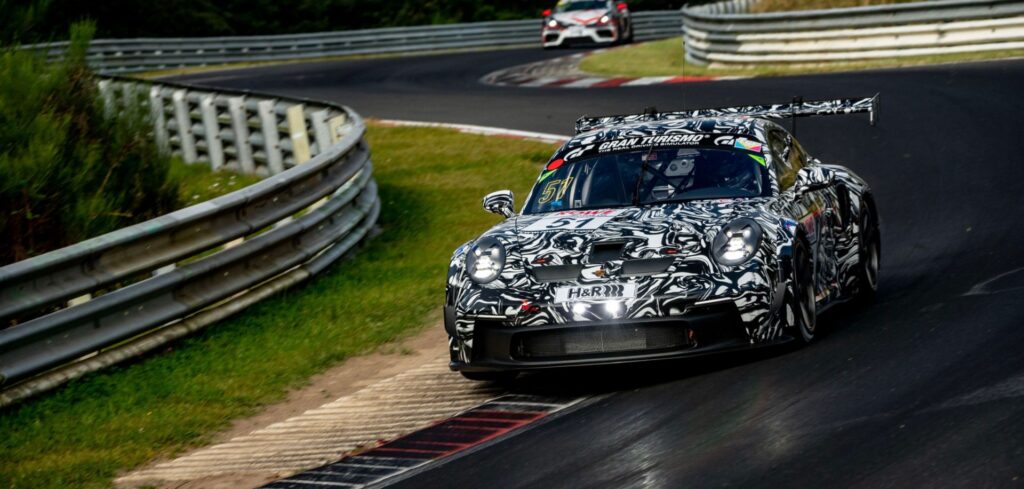Ahead of its release to customers, Porsche’s latest 911 GT3 Cup has been tested in endurance racing conditions, competing the penultimate round of the Nürburgring Endurance Series (NLS).
“As expected, the 911 GT3 Cup performed exceptionally well at its race debut on the particularly demanding Nürburgring-Nordschleife,” concluded project manager Jan Feldmann. “During its development, we made sure right from the start that it could also be fielded in endurance competitions as well as the one-make cup sprint races. Today’s test run in the NLS underlined that our team has done a great job.”
The latest 911 GT3 Cup is the first one-make car from Porsche to feature a wide turbo-spec body. Its engine exceeds the output of its immediate predecessor by 25bhp and can also run on synthetic fuels. Like its predecessor, the 911 GT3 Cup rolls off the Porsche production line in Stuttgart-Zuffenhausen alongside the roadgoing 911 models; 160 units were produced for 2021, with a second production run of 300 more cars currently underway.
Compared with the previous model, Porsche says its focus was on improved performance and a more aggressive design, easier handling and greater durability as well as making the car more cost-effective to run and maintain. The result is reflected in numerous features on the new vehicle, such as the addition of flared fenders which allow for the use of 12in-wide rims on the front and 13in-wide wheels at the rear axle. This is a typical combination for GT racing and, states Porsche, has a positive effect on the handling and driveability of the car. While the rear axle essentially remains unchanged compared with the 911 GT3 Cup (Generation 991), the front wheels are now controlled by double wishbones and uniball bearings – similar to the 911 RSR, Porsche’s current GTE car.
Modifications for racing around the ‘Green Hell’ were minor. “We’re primarily talking about an exhaust system that meets stricter noise requirements, and a modified tank filling system as well as softer sprint rates that harmonize very well with the damper system,” explained Feldmann. “Plus, the front has additional small flares, which provide a little more downforce at the front axle and make it easier for us to find a suitable setup for the demands of the Nordschleife.”
Unlike in the Porsche Mobil 1 Supercup and the Carrera Cup Deutschland, where the new car has also run, the 911 GT3 Cup in endurance trim is equipped with traction control (TC) and an anti-lock braking system (ABS). The ABS can be ordered or retrofitted directly from the factory while the TC, which is also optional, can be activated electronically. This allows for easy switching between endurance and sprint events.
Feldmann regarded the outing in the Nürburgring Endurance Series as purely a test run, which served to fine-tune the setup. In addition to assessing overall performance, Porsche also wanted to determine factors such as fuel consumption, in order to achieve a target window of eight laps for one stint. Moreover, the racing car was also fitted with prototype headlights, while the Manthey team (which runs the cars) has also been developing a new driver hydration system.
“It’s great fun driving the 911 GT3 Cup on the Nordschleife,” noted driver Marco Holzer, who was involved early on in the development of the one-make cup racer. “It’s really fast, very pleasant to drive and it does exactly what you want without any unexpected surprises. It’s much more of a racing car now and, in my opinion, looks fantastic with its large wing and wider body!”



